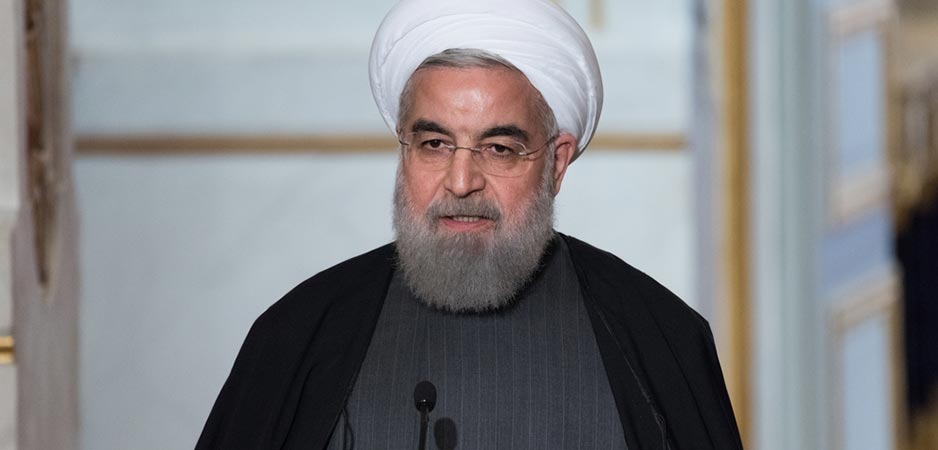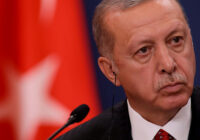The last time Iranians staged a revolution, they overthrew the oppressive Shah Mohammad Reza Pahlavi, who ruled his country from 1941 to 1979 with an iron fist. Pahlavi was a staunch US ally, but his reign left millions disgruntled due to unemployment, corruption, soaring inflation and ever-growing income inequality despite Iran’s oil wealth. He and the ruling elite were blamed for plundering the riches of the country. Eventually, the anti-shah protesters deposed Pahlavi and he lived in exile till his death in 1980.
The 1979 Iranian Revolution was rendered successful at the time because of two reasons. First, it had a well-organized core, the Shia Muslim clergymen, around whom the angry Iranian demonstrators (from communists to devout Muslims) united. Second, the bipolarity of the world order during the Cold War had kept the Middle East relatively stable, indirectly saving the revolution from being impacted by outside interference. Although the primary goal was to get rid of the shah, the revolution later morphed into one that was religious as a result of the Shia clergy, thus resulting in the Islamic Republic of Iran.
Today, it is as if the same conditions exist that led to the revolution 40 years ago. Disgruntled Iranians are angered by the oppressive government due to sky-high inflation, dismal living conditions, widespread poverty and the mishandling of state funds.
In Iran, the recent 50% hike on gas prices has triggered mass protests, which have cost the lives of more than 200 Iranians, according to Amnesty International. While the ingredients for an “Iranian spring” are there and hopes for a revolution have swelled, there are considerable challenges.
First, there is no organized opposition around which the anti-mullah sentiment coalesce. Therefore, Iranians have been unable to organize a revolution that would facilitate a smooth transition into a post-Islamic Republic era. This makes a meaningful Iranian revolution unlikely.
Second, the world order is not conducive to a revolution either. Since Russia and China have thrown their weight behind the Iranian regime, and as the US has become weaker in the Middle East, an anti-government revolution is improbable. The loss of Iran would spell disaster for Russia’s geopolitical strategy and China’s Belt and Road Initiative. Just like he did in Venezuela and Syria, President Vladimir Putin will do anything to keep Iran’s pro-Russian ruling elite in power.
If the Regime Fell
But let’s imagine that the Iranian regime as we know it collapsed tomorrow. That would bring about monumental problems, triggering a series of conflicts and humanitarian disasters from Pakistan to Europe.
With its 80 million people, Iran is an ethnically diverse country, with Persians (61%), Azeri Turks (16%), Kurds (10%), Arabs (2%) and Baluchis (2%) making up the bulk of the population. With the exception of Persians, almost every ethnic group in Iran has its own separatist agenda, which has been curbed by the strong central authority. In the event of state collapse, those entities would attempt to achieve their secessionist goals, which would most likely result in violence as it would upset the balance of power in the region.
The Azeris in northern Iran would aspire to unite with their brethren in Azerbaijan. That unification would likely upset the balance of power in the Caucasus, leading to an Azeri-Armenian war, which would inevitably pull Turkey and Russia into the conflict.
The Kurdistan Free Life Party (PJAK), the Iranian branch of the Kurdistan Workers’ Party (PKK) — which operates in Turkey and is considered by Ankara as a terrorist organization —would declare their independence, just like their Syrian counterparts have. This would raise concern for Turkey as independence for the PJAK would eventually energize secessionist sentiments among Turkey’s Kurds. To prevent this, Turkey would launch a military incursion in Iran’s Kurdish region, just like it has in Syria. Massoud Barzani’s Kurdistan Democratic Party (KDP) in Iraq would likely side with Turkey as the PKK poses a threat to him too.
The Baluchis of eastern Iran and western Pakistan have sought unification. The People’s Resistance Movement of Iran, also known as the Jundallah, has spearheaded the armed struggle for this purpose. Their unification attempt in a post-regime Iran would likely trigger a Pakistani military operation, possibly leading to a broader Indo-Pakistani entanglement.
Meanwhile, without Iran’s presence, Israel would likely invade Lebanon to root out Hezbollah, a likely destabilizing factor in an already tumultuous Lebanon that has been rocked by anti-government protests since October.
The implosion of Iran and the subsequent turmoil would undoubtedly create a tremendous refugee problem, the likes of which have not been witnessed before. Syria, with its pre-war population of 22 million people, produced a refugee crisis that shook the European Union in 2015. An Iranian refugee crisis would seal the fate of the EU as we know it.
That’s one reason the Europeans have been trying to save Iran from American actions by salvaging the 2015 nuclear deal with Tehran and circumventing US sanctions by creating an alternative payment method for Iranian oil. Furthermore, an intact central government in Iran has acted as a buffer between Afghanistan and Europe, preventing a major refugee influx into the continent.
While Iran is and will continue to be a major destabilizing country in the Middle East, its implosion, with the absence of a meaningful replacement, would likely create more problems than it would solve.
The views expressed in this article are the author’s own and do not necessarily reflect Fair Observer’s editorial policy.
Support Fair Observer
We rely on your support for our independence, diversity and quality.
For more than 10 years, Fair Observer has been free, fair and independent. No billionaire owns us, no advertisers control us. We are a reader-supported nonprofit. Unlike many other publications, we keep our content free for readers regardless of where they live or whether they can afford to pay. We have no paywalls and no ads.
In the post-truth era of fake news, echo chambers and filter bubbles, we publish a plurality of perspectives from around the world. Anyone can publish with us, but everyone goes through a rigorous editorial process. So, you get fact-checked, well-reasoned content instead of noise.
We publish 2,500+ voices from 90+ countries. We also conduct education and training programs
on subjects ranging from digital media and journalism to writing and critical thinking. This
doesn’t come cheap. Servers, editors, trainers and web developers cost
money.
Please consider supporting us on a regular basis as a recurring donor or a
sustaining member.
Will you support FO’s journalism?
We rely on your support for our independence, diversity and quality.






